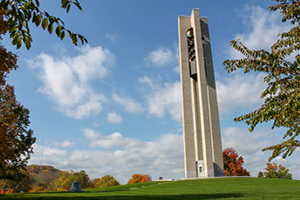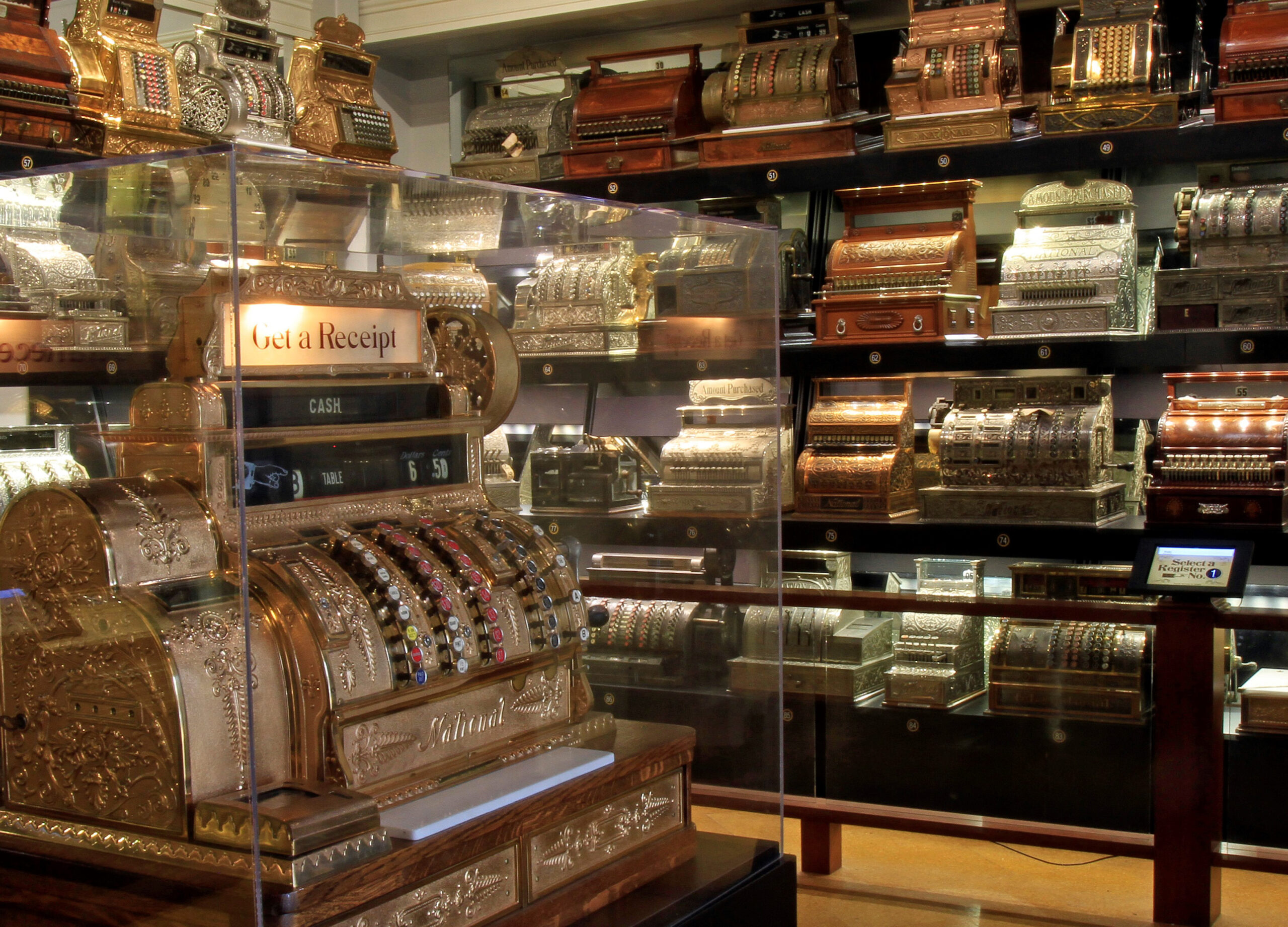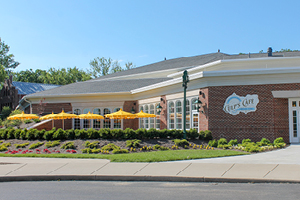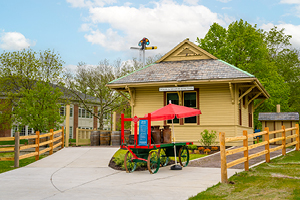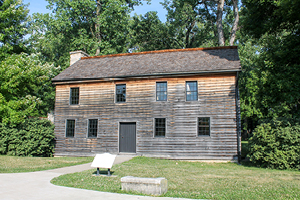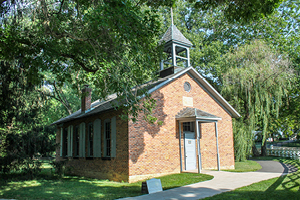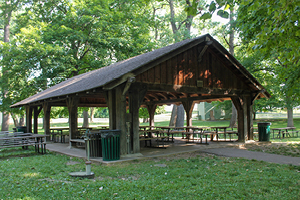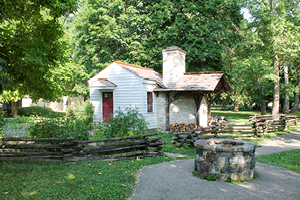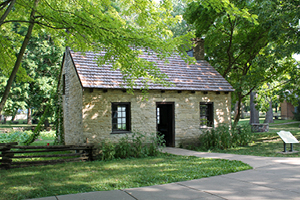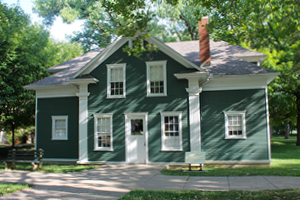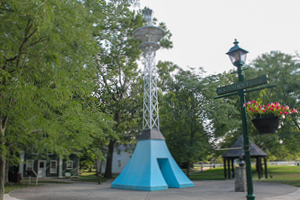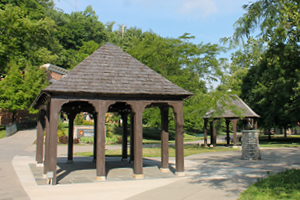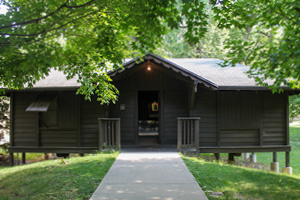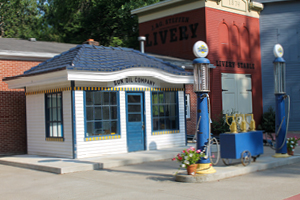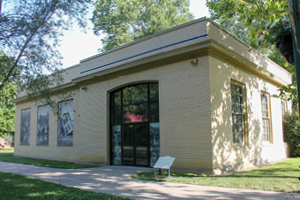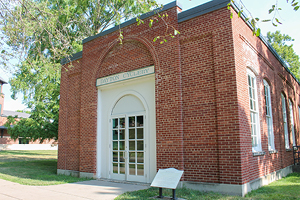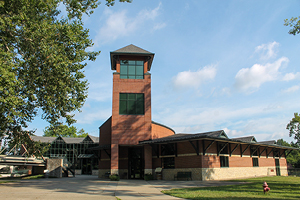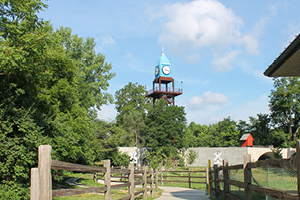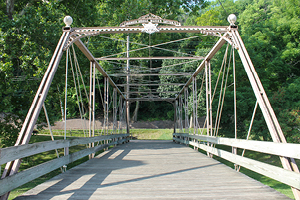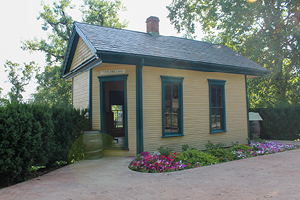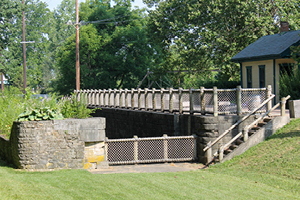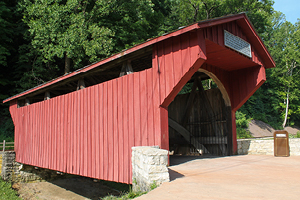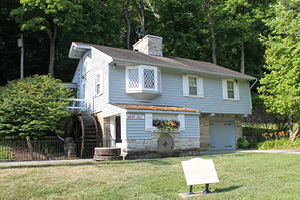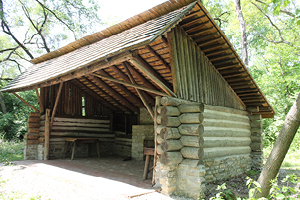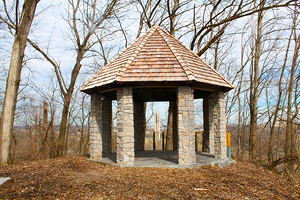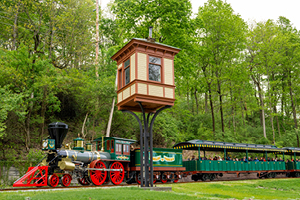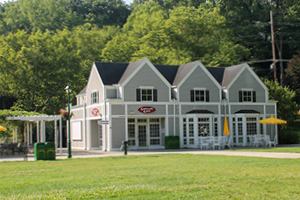Park Map
Use our interactive map to find your way around the park!

1. Deeds Carillon
At 151-feet, with 57 bells, the Deeds Carillon was a gift of founders Colonel Edward A. and Edith Walton Deeds. One of Dayton’s best-known landmarks, Deeds Carillon plays daily automated musical selections. The Park’s internationally acclaimed carillonneur also plays original concerts throughout the year.
2. Kettering Family Education Center
The first stop for all admissions and information. It houses exhibits, the Iams Education Room, administrative offices, and the Museum Store.
3. Heritage Center of Dayton Manufacturing & Entrepreneurship
Featuring an NCR cash register room with 90 Dayton-made machines, the Build for Tomorrow animatronic theater, the original Deeds Barn, dozens of exhibits featuring Dayton factories and companies, and the Carousel of Dayton Innovation, a full-scale, hand carved carousel featuring one-of-a-kind characters such as Orville Wright’s dog, a Dayton soap box derby car, and a soda can with the Dayton-made pop top.
4. Culp’s Café
Reminiscent of Culp’s Cafeteria located in downtown Dayton in the 1930s and 1940s, serves soups, sandwiches, ice cream and sodas.
5. Winsupply Center of Leadership
Features the beautiful Eichelberger Pavilion special event space, as well as meeting rooms and both the Schear Family Gallery and the Roger Glass Gallery exhibit spaces.
6. Carillon Brewing Company
The nation’s only fully operational 1850s style brewery and full-service restaurant, immerses guests in the sights, sounds and smells of the mid-19th century brewing process.
7. Dixon & Shafor Junction
Dixon & Shafor Junction is an original, 1894 railway station. Formerly known as Bowling Green Depot, it served as many as 14 freight and passenger trains daily. The Carillon Park Railroad’s loading platform is next to this building.
8. Newcom Tavern
The oldest building in Dayton, built by Robert Edgar for Colonel George Newcom. The hand-hewn log house originally stood at Main Street and Water Street (now Monument Avenue). Outside the Tavern stands a sundial originally located in Van Cleve Park and dedicated for Dayton’s Centennial celebration in 1896. The well is representative of the wells used by early settlers to obtain drinking water. Early histories state that Col. Newcom, as sheriff, would sometimes incarcerate prisoners in a dry well.
9. Locust Grove School No. 12
A one-room schoolhouse at the corner of Possum and Bird Roads outside of Springfield, Ohio from 1896 until 1929. One teacher instructed students in grades one through eight.
10. Watervliet Shaker Building
The final surviving remnant of the Watervliet Shaker community, which was located in eastern Montgomery and western Greene counties from 1806 until 1900. At its height, the utopian religious community was home to over 100 individuals. Research indicates that this building was used as a printing office for Richard McNemar, a leading Shaker author, but today it interprets the overall Dayton Shaker story.
11. Horse Barn No. 17
Horse Barn No. 17 (1901) was originally constructed as a timber frame bank barn housing 70 horse stalls. During 2019 and 2020, the building was carefully disassembled and rebuilt at the Park. Barn 17 shares the 160 years of history of the old Montgomery County Fairgrounds. Stories about Dayton’s agricultural past, famous visitors to the fairgrounds, and historic events held there are exhibited.
12. The Whitney Picnic Pavilion
A picnic shelter and gift of philanthropists Lee and Betsy Whitney in 2003 in honor of their 50th wedding anniversary.
13. Hetzel Summer Kitchen
The temporary home for early Van Buren Township resident, Peter Hetzel, and his family while their permanent home was being constructed. The building then served as a summer kitchen for many years.
14. William Morris House
Built of locally quarried limestone served as a home for Revolutionary War veteran, William Morris, and his family. The house was located on Social Row Road in the farmlands of southern Montgomery County’s Washington Township.
15. Newcom House
Built in the Greek Revival style, was constructed on land owned by Dayton settler, George Newcom. Although there is no record of any Newcom family members ever living in the building, the house interprets Dayton life in the 1840s. The hitching post in front of the house was used to tie up horses that pulled wagons and carriages. It was originally located on the Volkenand Farm in the Walnut Hills area of Dayton. The carriage step was used to climb aboard high carriages. Its original location is unknown.
16. Deeds Barn Replica
Housing exhibits about the lives and work of acclaimed inventors, Charles F. Kettering and Colonel Edward A. Deeds. The original Deeds Barn, now located in the Park’s Heritage Center of Dayton Manufacturing and Entrepreneurship, was located behind the Deeds home at 319 Central Avenue in Dayton. Inside the barn, Deeds, Kettering and a group of friends invented the electric automobile ignition, and later, the electric automobile self-starter.
17. Old River Park Swimming Pool Light Tower
A distinctive feature of one of the largest swimming pools in the Midwest, located at NCR’s employee recreation facility, Old River Park. Old River was the brainchild of Colonel Edward A. Deeds and was designed by the famous Olmsted Brothers landscape architects.
18. Old River Park Shelters
Old River Park Shelters (1939) were used by NCR employees, their families and friends for 70 years. They were reconstructed here in 2021 and 2022.19. Deeds Plaza

20. Sugar Camp/WAVES Cabin 22
Formerly located on the grounds of The National Cash Register Company’s Sugar Camp training facility. This cabin was one of 60 used to house U.S. Navy WAVES as they worked on a classified code-breaking project during World War II.
21. Corliss Engine Building
Houses the Corliss Engine that provided the National Cash Register Company electrical power and steam heat from 1902 to 1948.
22. Gem City Letterpress
Gem City Letterpress is a fully operational print shop of the 1930s era, when Dayton was home to 77 printing companies.
23. Sun Oil Station
Formerly located at the intersection of Brown and Warren Streets in Dayton. The pumps in front of the station feature clear glass cylinders, which attendants filled with gasoline from an underground tank and then let them drain into customers’ cars.
24. Dayton Sales
A representative auto sales building housing early Dayton-made automobiles. Among them are a 1908 Stoddard-Dayton, 1910 Speedwell, and 1910 Courier.
25. The Great 1913 Flood Exhibit Building
Houses stories and artifacts about Dayton’s worst natural disaster, including the National Cash Register locomotive, “Rubicon,” which operated as a switch engine at the factory from 1909 to 1961.26. Miller Shelter
Dedicated to 40-year Park employee, Lloyd Miller.27. Carillon Park Rail and Steam Society
Operates scale trains on scheduled Saturdays and during special events.
28. Dayton Cyclery
Houses the Park’s collection of rare and antique bicycles with a special emphasis on the Miami Valley’s role in bicycle evolution.
29. James F. Dicke Family Transportation Center
Houses most of the Park’s historic public transportation collection: the 1835 John Quincy Adams, 1903 Summer Trolley, 1904 Kuhlman Interurban, 1923 B & O Caboose, 1903 Barney and Smith Railroad Car, 1949 Marmon-Herrington Trolley Bus and RTA Supervisor’s Booth.
30. Brethen Tower
A 100-foot tall climbing tower supporting the Callahan Building Clock. Built in 1919, the clock was a distinctive landmark in downtown Dayton atop the Callahan Building, later known as the Gem Savings Building, at the corner of Third and Main Streets. The tower features an observation platform allowing views of the area surrounding Carillon Park.
31. Morrison Iron Bridge
Once spanned Tom’s Run on Gratis Road near Farmersville, Ohio. David Morrison, founder of the Columbia Bridge Works of Dayton, built it.
32. Canal Superintendent’s Office
Used for collecting canal fees, located between Second and Third Streets in downtown Dayton.
33. Miami and Erie Canal Lock No. 17
Located in the original canal bed dug between 1825 and 1829 which runs through Carillon Park. The lock was originally located six miles north of Dayton.
34. Smith Covered Bridge
Built by Robert W. Smith and spanned Little Sugar Creek on Feedwire Road in Greene County.
35. John W. Berry, Sr. Wright Brothers National Museum
The museum, including the Wright Cycle Company building and Wright Hall, tells the world changing story of the Wright brothers and showcases their original 1905 Wright Flyer III, the world’s first practical airplane and a National Historic Landmark. The Museum is a privately owned and operated unit of Dayton Aviation Heritage National Historical Park.
36. Gristmill
Representative of a gristmill with an operating grindstone and grinding mechanism. It also serves as a residence for a Park caretaker.
37. Mad River Pulp and Paper
Coming Soon!
38. Glacial Slides
Allows the young and young at heart to travel down tube slides built into the Park’s glacial moraine.
39. Marie Aull Sculpture and Garden
Dedicated in 2003, pays tribute to nationally recognized conservator Marie Sturwold Aull (1897-2002) who founded Aullwood Audubon Center and Farm north of Dayton in 1957.
40. History on the Hill Interpretive Center
Shares stories about the history of the land that is today Carillon Historical Park, including its geological history, its use by the prehistoric Hopewell people, and it being the location of a segment of the Miami and Erie Canal.41. Yeck Plaza
Serves as both the gateway to the Park’s History on the Hill trail system and as an outdoor programming area for educational workshops.
42. Patterson Adirondack Shelter
Originally constructed on NCR founder John H. Patterson’s estate, The Far Hills, in Oakwood, Ohio. Patterson, a frequent visitor to upstate New York, was particularly fond of Adirondack architecture. He used this shelter as the prototype for many similar structures he later built in Hills and Dales Park, a beautiful green space he gifted to the people of Dayton in 1907.
43. Octagonal Shelter
Built in the style of picnic shelters originally located at NCR’s Old River Park.
44. Watchtower
The Watchtower served Dayton as a railroad watchtower from 1907 to 1976 near the intersection of West Fifth and Broadway Streets. An attendant manually operated railroad crossing gates from inside the tower.
45. Oasis Restrooms

46. Carillon Café
Open Seasonally, serving light fare and snacks.
